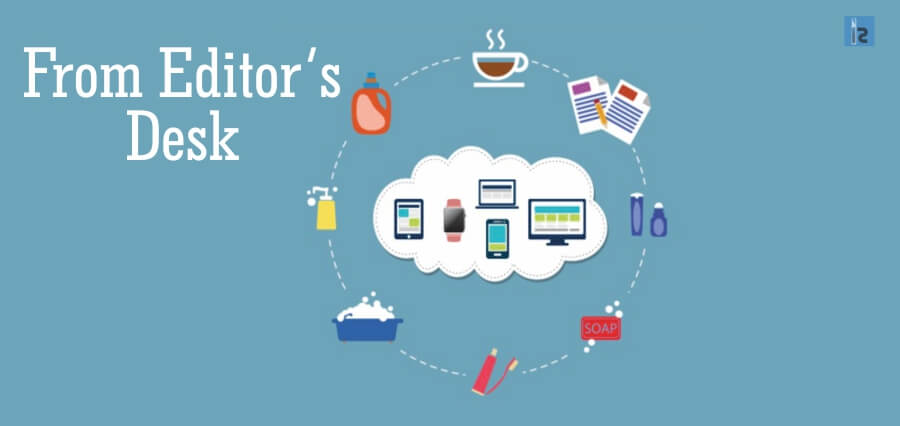In this fast-paced world, industries are constantly striving to cater the needs of mankind. In today’s global marketplace, the information associated with a product is fast becoming a critical link in the supply chain. Especially in fast moving consumer goods (FMCGs) industry, there is more fierce competition and more unstable requirement. Most plants use manufacturing resource planning system to manage the process of production. The various industries play a pivotal role in contributing and enhancing the economy. The FMCG (Fast Moving Consumer Goods) is the fourth largest sector of the Indian economy. As individuals experience a set of measures like growing awareness, easier access, and changing scenarios, which assists in boosting the growth of this sector. These changes have been seen due to the liberalization, urbanization and increase in the disposable incomes and modifications in the lifestyle of the people. The FMCG products have a small shelf life at considerably low cost and it doesn’t consume a high financial investment to purchase. It is popularly known as consumer packed goods and includes consumables which individuals buy at a regular interval for day-to-day chores.
Key Factors of the Indian FMCG Sector
- As the modern trade is gaining importance day-by-day, it is a big ticket item that is expected to grow at 20% year-on-year and is credibly to boost revenues for FMCG players.
- The household and personal care is one of the primary segments accounting for 50% of the overall market and the Food and Beverage at 19% market share.
- With the increasing adoption of sales technologies and growing mobility usage, the FMCG distribution system has become more transparent, organized and convenient.
- By 2020, the Indian FMCG market is expected to grow at a CAGR of nearly 21%.
- A rise is expected in rural consumption is all set to drive the FMCG market. It is estimated to grow at a CAGR of 14.6% by the year 2025.
The Rural Areas Set to Rise
Over the years the FMCG sector has rapidly progressed and continues to expand its outreach. The rural areas have immensely impacted the sector and are estimated to be a major driver and continue to increase in the regions. As compared to the urban areas, the rural areas have experienced a higher rise in the sector. The companies’ recognized this as a golden chance and has rushed to capitalize on this, it granted excellent services like direct distribution and utmost infrastructure. With such a great response, the companies are creating specific products, which are prominently targeted for the rural market.
The Government of India has taken effective measures to support the rural population with facilities such as higher minimum support (MSPs), loan waivers, and disbursements through the National Rural Employment Guarantee Act (NREGA) program. All these measures has helped in reducing poverty in rural India and lifted the rural purchasing rate.
An Overview of the Rural Market Consumer Behavior
The urban market accounts for almost 60% revenue share and the semi-urban and rural segments are the high potential markets that is growing faster day-by-day and is recently accounts for 40% revenue share. One of the interesting facts to note is that FMCG products accounts for 50% of total rural regions spend in India. Mobile comes very handy to the user and hence it has evolved as one of the most important devices over the years. The mobile internet users in rural areas are experiencing a growth of nearly 26%. The mobile handset penetration in rural India is much higher than TV. Seeing the statistics, the FMCG brands can use the mobile medium creatively to expand its outreach.
Strategies Embraced by FMCG Companies
In order to succeed in a competitive market developing key strategies is a must. Some of the most likely strategies experienced by the FMCG brands include offering of the customized products owing to different target audiences. It provides distinct customer preferences like women based products or kids based products. The FMCG players hugely spend on product innovation and promotion so as to surpass competition and to stay ahead in the race.
As people today are living in a digital world, it is important for FMCG companies are focusing on building their online presence. As the online research enables customers to make informed purchasing decisions and gives them the required details at a click. The FMCG sector is climbing the ladder of success steadily, in order to rise and maintain the pace of investing in new sales technologies such as SFA (Sales Force Automation). Some of these SFA solutions are number of increased internet users across the country, emerging competition, advent of modern trade and need for a well-defined retail distribution system. This has prompted leading FMCG players to integrate these solutions in the sales system. This indeed will create an advanced, strong and seamless business environment for organizations. Â
The Road Ahead
Having extensively discussed the FMCG landscape, it is clearly evident that it is on upsurge today growing at a rapid pace. To maintain this scenario, the FMCG companies need to focus on R & D and innovations in terms of growth. Consistency is the key in any business, companies that continue to do well would be the ones to promote using customer insights to create new product category or next generation of products.


